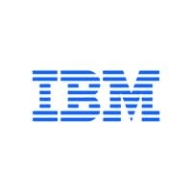

UrbanCode Deploy and Microsoft Azure DevOps are competitors in the deployment automation and DevOps solutions market. Azure DevOps appears to have an edge for its comprehensive integration and robust CI/CD pipelines which are praised for ease of use and seamless Microsoft product integration.
Features: UrbanCode Deploy is valued for its deployment automation, server/agent architecture, repeatable deployments, and scalability suitable for large developer bases. Azure DevOps is noted for its high-level automation, CI/CD pipelines, and integration with Microsoft's suite, enhancing project management and development.
Room for Improvement: UrbanCode Deploy needs better technical support responsiveness, plugin enhancements, and simpler upgrade processes. Microsoft Azure DevOps faces challenges with pricing models and integration with third-party tools, and it could benefit from improved multi-project reporting and planning tools.
Ease of Deployment and Customer Service: UrbanCode Deploy is suitable for on-premises deployment but often needs expert support, with customer service described as mixed. Azure DevOps offers easier accessibility as a cloud-based platform but may have a complex initial setup; its customer service is considered adequate yet could be more proactive.
Pricing and ROI: UrbanCode Deploy is seen as costly with complex licensing, though it provides a good ROI through efficiency and scalability. Azure DevOps offers a flexible pricing model, often bundled, which users find cost-effective, especially for cloud-based projects, noting the bundled services contribute to strategic advantages.
| Product | Market Share (%) |
|---|---|
| Microsoft Azure DevOps | 31.1% |
| UrbanCode Deploy | 3.9% |
| Other | 65.0% |

| Company Size | Count |
|---|---|
| Small Business | 42 |
| Midsize Enterprise | 27 |
| Large Enterprise | 69 |
| Company Size | Count |
|---|---|
| Small Business | 5 |
| Midsize Enterprise | 5 |
| Large Enterprise | 21 |
Microsoft Azure DevOps is a cloud service that enables developers to collaborate on code development projects and create and deploy applications quicker than ever before. The service helps unite developers, project managers, and software development experts through a collaborative experience while using the application. For the users' convenience, Azure DevOps offers the user cloud services through Azure DevOps Services or an on-premises service using Azure DevOps Server. In addition, it supports integration with additional services and adding extensions, including the ability for the user to create their own custom extensions.
Azure DevOps provides a variety of unified features that can be accessed through their web browser or IDE client, such as:
Benefits of Microsoft Azure DevOps
Microsoft Azure DevOps offers many benefits, including:
Reviews from Real Users
Microsoft Azure DevOps stands out among its competitors for a variety of reasons. Two major ones are its ability to forecast how long each task will take and the ability for users to follow the entire development process.
PeerSpot viewers note the effectiveness of this solution. An executive chief operating officer for a cloud provider notes, “We can forecast tasks and the number of hours a task will take and can compare it with how long a task actually takes.”
Carlos H., a product and system director at SPCM, writes, “I think the most usable thing is that you can follow the whole progress of the development process. This makes it very useful for us.”
IBM UrbanCode Deploy orchestrates and automates the deployment of applications, middleware configuration, and database changes into development, test, and production environments—local, dedicated or shared cloud environments—accelerating time to market and reducing cost by shrinking manual efforts from days to minutes with automation, while reducing risk by cutting deployment errors by up to 90 percent.
We monitor all Release Automation reviews to prevent fraudulent reviews and keep review quality high. We do not post reviews by company employees or direct competitors. We validate each review for authenticity via cross-reference with LinkedIn, and personal follow-up with the reviewer when necessary.